Loke-chalot or leek is a popular plant from which you can cook a lot of varied dishes and snacks. Onions can be marked, used in fresh form, saline, freeze and dry. It is possible to use leeks in fresh form as an independent ingredient, as well as add as seasonings. It is not difficult to grow leek on its own, if you follow certain rules. The plant adapts to any climate, but for the middle strip of Russia, it is better to grow leeks from seeds.
In the zones of moderate climate all over the world, leek is widely grown. This culture is more honored by residents of Western Europe due to the high content of vitamin C in the stems of a bow-sowing.
If you study a little story, it becomes clear that the leek was popular at the beginning of the last century, and the writer France even assigned a new name to this plant and called him food for the poor, because the bows stems quickly satisfy the body. Indeed, it is possible to grow onions on your household plot or buy in stores. It is a useful vegetable inexpensive, especially in the ripening season. But we will not go to the store to buy onions, much more interesting to grow this useful vegetable on your site yourself.
Leek Spend Growing from Seeds
Interestingly, but this plant can be eaten even when the first leaves were formed. Of course, cooks will read sometimes for the unusual taste of a bleached plant stem or the so-called leg. From the stems you can cook a lot of delicious dishes, by the way, the young leaves of the shalot can also be eaten. Of these, useful salads are obtained. In young leaves of the plant contains a lot of useful substances, in particular - vitamin C and potassium.
Onions can be grown in two ways: sowing seeds directly into the soil or cultivation of seedlings. To get leek for eating food, it is necessary to wait for the leg diameter to reach 1.5 cm, it takes about 6 months. Since in our lane it is impossible to achieve such indicators, then it is best to go planting seeds.
What conditions need to be observed when growing garden culture:
- The bow grows well on any soils, but it is possible to achieve high yields only on fertile soils, the average loams will be suitable. When you prepare the seedlings of the seedlings, you need to switch the soil "on the shovel" (the depth of the arable layer).
- Onion loves fertilizer: compost or manure. Good predecessors for some kind of cultures are such cultures: the potatoes of early grades, cabbage, cucumbers and legumes. Multipaties are desirable to make early spring.
- That is very important when growing onion, it is timely watering. This plant does not like droughts, if the soil is deprived of moisture, the rise of Luka will stop, and after the resumption of watering, will go into growth again. The main thing is not to bring to a critical state. Irrigation rate on 1m 2 - Not less than 20 liters of water, best - for furrocks.
- Grow leek - solid pleasure. It is easy to care for the culture, you need to loosen the soil in a timely manner, freeing from weeding grass and dip. You can mulch at the garden bar, peat or dry straw (used in crushed form). This method of cultivation will help prevent the evaporation of moisture and the soil cutting, and will not allow the germination of weed grass.
- Remember that the growing season is the most difficult and responsible, it seems that the onions are stuck in place and does not want to grow. During this period, the development of culture will be slow. In order not to occupy a place on the site, you can save space and plant leeks together with other garden crops. It is well combined by this plant with cucumbers, beet, radish and salad.
Leek pore, growing. Photo:
Leek. Sowing and growing:
- To grow onions from seeds, it is necessary to prepare the planting material in advance. We start working with seeds in the middle of the first spring month.
- How to prepare: Seeds leave in water for 20 minutes. This is the maximum time. Water should be hot, but not higher than +50 oWITH.
- After staying the planting material in the water, it is necessary to rinse it well in clean water and wrap in a slightly wet fabric. Leave again in a wet medium at least 3-5 days.
- After a week, planting material can be deployed and dried.
- All, onion seeds are ready for landing. By the way, seeds are desirable to withstand several years.
How to sow the seeds of the bow:
- in advance prepared boxes with land (making fertilizers) you need to sow seeds. The optimal period for landing is attended by seedlings - mid-April, if you want to move the boxes into a glass greenhouse, and the end of April, if you are going to plant a bow right away on the beds, covering the film;
- requirements for landing: Make the grooves depth to 2 cm;
- moisturizing the soil and prepare the beds, taking into account that between them there was a distance equal to 5 cm;
- seeds are singered in the prepared and fertilized soil, cover the films with film and move to the illuminated place. The windowsill is suitable, just follow the temperature in the room so that it does not fall down the mark below than +22 oWITH;
- with the advent of the first shoots, we remove the film from the boxes and proceed to hardening the seedlings: we understand the temperature in the afternoon until +20 oC, at night -14 oWITH;
- a month after the landing, it is necessary to break the seedlings, seedlings are pyric in separate pots (diameter 4 cm);
- in May (after 50 days after sowing) it is time to transplant the faster seedlings into the soil, but first you need to trim on 1/3 of the leaves of the grown plants and shorten the roots;
- to improve the survival of plants, you need to lower the roots for several minutes to the nutrient mixture. It can be prepared independently of clay and liquid cowboat in equal proportions;
- do not forget to make a nutrient mix and in the soil before planting. Onions are spoken up well on such feeders: urea intersmercing with ash (500 ml) and sawdust (volume 2 l). The soil with minudging needs to be cooled to a depth to 20 cm;
- before landing, where leek will be grown, it is necessary to feed the nutrient mixture. Well, if last year onions, cucumbers, carrots or garlic were grown at this place;
- a landing carry out such a scheme: we deepen each seedling 2 cm into the soil, the distance between seedlings is 15 cm;
- after landing, the bow can not watered 3 days so that it takes place and lean in a new place. His moisture is enough, since before planting we are well moistened by the soil;
- after 3 days, you can pour the seedlings according to such a scheme: on 1 2m soil - 15 liters of water, watering we carry out 1 time in 5 days;
- after 20 days from the moment of landing, the bow should be supported by superphosphates, a cow or urea.
Growing Tips on Luke Soon
Carefully examine these recommendations, you may have any questions:
- the most optimal time for sowing seeds is at the middle of March, but you can sow seeds in the middle or late February;
- since during this period the light day is still short, it is necessary to provide a seedlift. On average, artificial day should last at least 12 hours;
- it is very important during the period of active growth of seedlings to observe the temperature in the room. Immediately after landing, the air temperature in the room should be in the afternoon +25 oC, as soon as the first shoots appear - the temperature can be lowered to +17 oC, seedlings at such a temperature need to withstand a week (at night to +12 oC), then the average temperature for rapid seedlings should be +20 oC (maximum), and at night not lower +14 oC. If these conditions are not followed, then the plant will form a floral arrow in the first year of life (if it is hot in the room);
- the thickened shoots ruthlessly thinning so that there are free space between the seedlings at least 3 cm;
- you can grow a strong seedlings in peat pots, then you need to immediately sow seeds into separate containers and the picking does not have to do;
- during the growth of Luke, it is necessary to periodically shorten the leaves so that the length is the same - up to 10 cm. It can be done every 2 weeks to improve the growth of the root system and form a thick stem;
- leek develops very slowly, after 8 weeks after sowing seeds the diameter of the stem will be only 0.8 cm;
- as soon as the seedlings acquire the first 3 leaves, it's time to move the seedlings to a greenhouse or in an open soil (in May);
- landing schemes: the first is one-row, when the distance is 15-20 cm between the seedle, and the width between the rows is 30 cm. The multi-row landing scheme - between the seedlings, the distance is 15 cm, the width between the rows is 30 cm;
- it is best to grow onions on a narrow bed next door with carrots, a leek is well friendly with celery, onions, beet and garden strawberries.
Leek Side - Growing and Care
It is not difficult to care for the plant, it is necessary to dip and loosen the soil in a timely manner, struggling with weed grass, prevent the soil dryness and make feeding on time. And now about everything in detail.
To facilitate care care, you need to mulch the soil, the plants will feel more comfortable, their growth will improve.
When the stems in diameter are approaching the sizes of a simple pencil, it is necessary to plunge a little ground into each well, and the diplock is performed every 14 days. So it is possible to ensure that the stem has become longer and did not darke. In the season you need to perform 4 extracts of each culture. By the way, this procedure is best done immediately after watering.
And now about watering: the onion loves water very much, so it is necessary to regularly water the soil and make fertilizers. It is necessary to feed the culture in the 1st period of vegetation with a cow or bird litter in the form of a solution (proportions 1 to 20 and 1 to 8).
Since the most valuable and tasty in Luke is a bleached stem or false leg, then you need to make every effort to achieve such an effect. If you make feedstocks in time, water and dip this garden culture, then the stem can grow to half a meter and up to 4 cm in thickness, and these are excellent indicators.
By the way, the bow is not afraid of small frosts, moreover, in areas with a warm climate, the plant can even be overwhelmed under the snow covering and easily moves freezing to -5-7 oS. By the way, if the summer was rainy and cold, it is not very good for the development of culture, the stem is formed thin and high.
Winter grades are more resistant to cold and frost, but due to the fact that the growing season at the late variety is longer, then the plants do not have time to form. Such varieties are preferably grown in greenhouses (under a film or glass). If you ventured the growing of the late grades, then the culture needs to be transplanted into the pots and move to a warm place to wintering to have time to the first autumn frosts.
Fighting pests and diseases
When growing onion, many gardeners face such problems as pest attack and plant damage to various diseases. Rust, false mildew Rosa, Lukova and Black Mold - List is quite impressive and you need to be fully armed to grow a good harvest.
Measures of struggle:
- The failure can be a carrier of a dangerous disease called "Mosaic". As manifests: the leaves are covered with yellow spots, the rise of the onions stops. Unfortunately, it is impossible to fight with such a disease, it is necessary to completely destroy all the plants. You can implement a number of preventive measures to combat diseases. And yet, it is necessary to grow onions from those seeds that have enough to have departed and viruses have already managed to die (seed excerpt for 3-4 years).
- Puffy dew - white spots appear on the leaves, which quickly increase and affect the entire plant. To eat onions can not be eaten. It is necessary to treat the plant with a copper solution of chloroksi.
- The appearance of rust - bright yellow sections or "pads" grow on the leaves "grow". This is the argument of the mushroom, they pass several stages of growth: ripen and change coloring with bright yellow to black. The affected leaves gradually fade and dry out. So that the disputes are not transferred to healthy cultures, it is necessary to remove the affected plant completely with the root.
- The leek fly is a cunning pest, eats mainly leaves, leaving behind the labyrinths. The larvae also harm the plant, they affect the root system, the bow will instantly dies. If you do nothing, you can lose all crop. You can scare the pest, if you put a carrot together with a bow, the smell of this garden culture does not like the onion fly. If you have noticed that the bow attacked the fly, it is necessary to pour a plant with a salt solution (10 liters of 1 glass of salt) or sprinkle with the soil with black ground pepper, mixed with wood ash (per 1 m 2 1 t racks pepper). You can mix ashes with crushed dry carrots seeds.
It is not so difficult to grow leek on its plot as it may seem first. All your efforts will pay off, if you follow these recommendations. Harvesting you!
Growing onion sowing. Video:

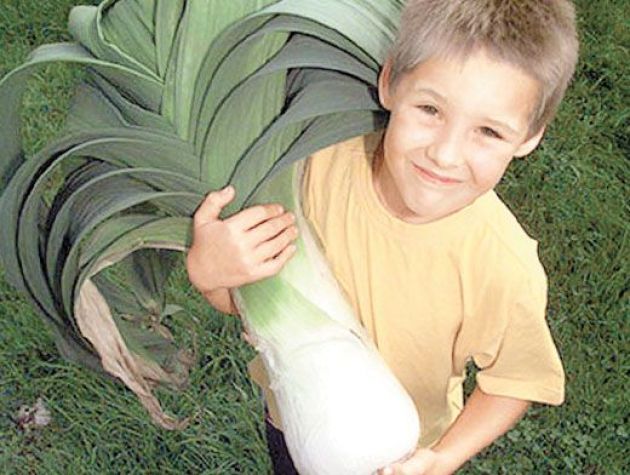
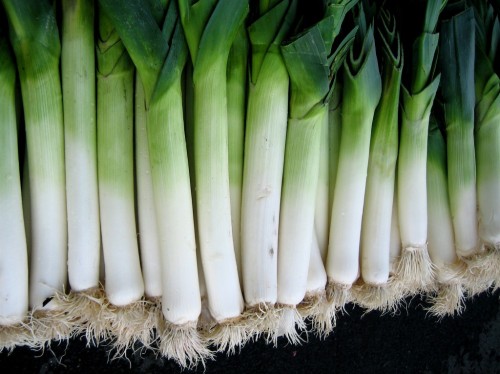
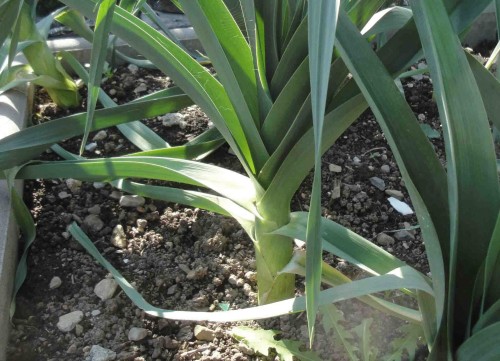
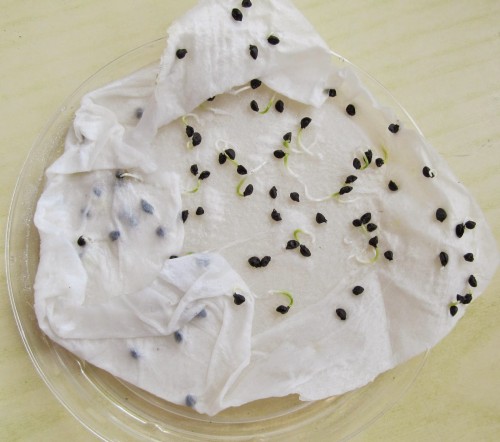
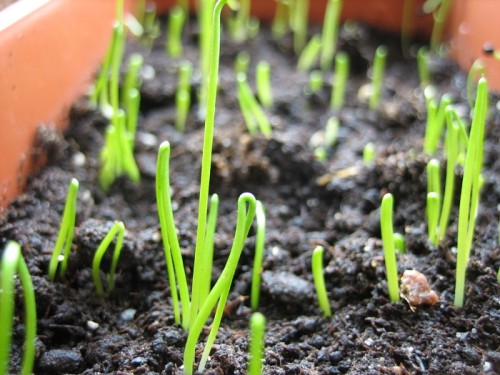
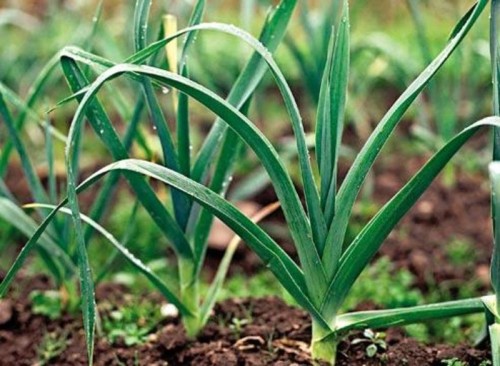
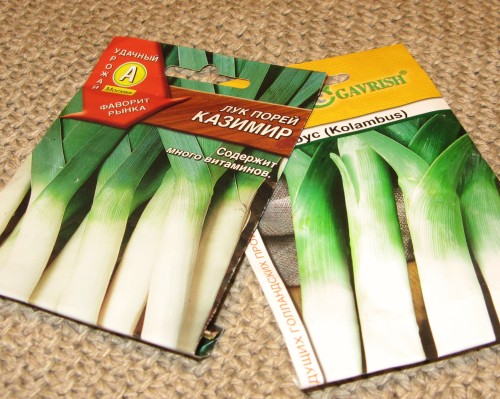
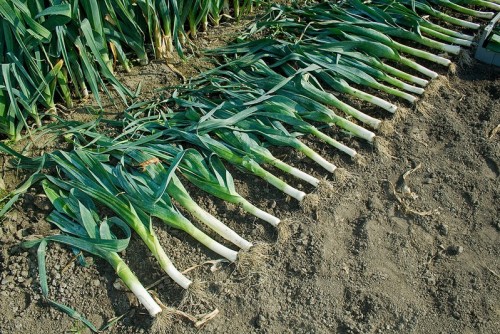
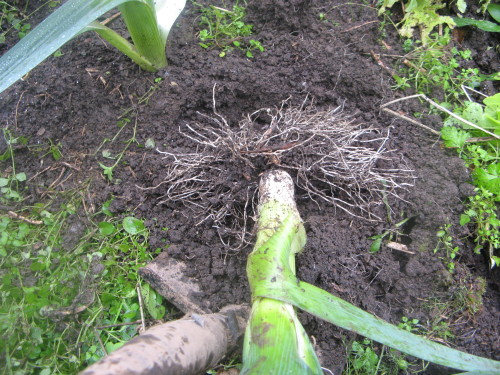












 Start a discussion ...
Start a discussion ...